#computing hardware
Explore tagged Tumblr posts
Text
Photonic processor could enable ultrafast AI computations with extreme energy efficiency
New Post has been published on https://thedigitalinsider.com/photonic-processor-could-enable-ultrafast-ai-computations-with-extreme-energy-efficiency/
Photonic processor could enable ultrafast AI computations with extreme energy efficiency


The deep neural network models that power today’s most demanding machine-learning applications have grown so large and complex that they are pushing the limits of traditional electronic computing hardware.
Photonic hardware, which can perform machine-learning computations with light, offers a faster and more energy-efficient alternative. However, there are some types of neural network computations that a photonic device can’t perform, requiring the use of off-chip electronics or other techniques that hamper speed and efficiency.
Building on a decade of research, scientists from MIT and elsewhere have developed a new photonic chip that overcomes these roadblocks. They demonstrated a fully integrated photonic processor that can perform all the key computations of a deep neural network optically on the chip.
The optical device was able to complete the key computations for a machine-learning classification task in less than half a nanosecond while achieving more than 92 percent accuracy — performance that is on par with traditional hardware.
The chip, composed of interconnected modules that form an optical neural network, is fabricated using commercial foundry processes, which could enable the scaling of the technology and its integration into electronics.
In the long run, the photonic processor could lead to faster and more energy-efficient deep learning for computationally demanding applications like lidar, scientific research in astronomy and particle physics, or high-speed telecommunications.
“There are a lot of cases where how well the model performs isn’t the only thing that matters, but also how fast you can get an answer. Now that we have an end-to-end system that can run a neural network in optics, at a nanosecond time scale, we can start thinking at a higher level about applications and algorithms,” says Saumil Bandyopadhyay ’17, MEng ’18, PhD ’23, a visiting scientist in the Quantum Photonics and AI Group within the Research Laboratory of Electronics (RLE) and a postdoc at NTT Research, Inc., who is the lead author of a paper on the new chip.
Bandyopadhyay is joined on the paper by Alexander Sludds ’18, MEng ’19, PhD ’23; Nicholas Harris PhD ’17; Darius Bunandar PhD ’19; Stefan Krastanov, a former RLE research scientist who is now an assistant professor at the University of Massachusetts at Amherst; Ryan Hamerly, a visiting scientist at RLE and senior scientist at NTT Research; Matthew Streshinsky, a former silicon photonics lead at Nokia who is now co-founder and CEO of Enosemi; Michael Hochberg, president of Periplous, LLC; and Dirk Englund, a professor in the Department of Electrical Engineering and Computer Science, principal investigator of the Quantum Photonics and Artificial Intelligence Group and of RLE, and senior author of the paper. The research appears today in Nature Photonics.
Machine learning with light
Deep neural networks are composed of many interconnected layers of nodes, or neurons, that operate on input data to produce an output. One key operation in a deep neural network involves the use of linear algebra to perform matrix multiplication, which transforms data as it is passed from layer to layer.
But in addition to these linear operations, deep neural networks perform nonlinear operations that help the model learn more intricate patterns. Nonlinear operations, like activation functions, give deep neural networks the power to solve complex problems.
In 2017, Englund’s group, along with researchers in the lab of Marin Soljačić, the Cecil and Ida Green Professor of Physics, demonstrated an optical neural network on a single photonic chip that could perform matrix multiplication with light.
But at the time, the device couldn’t perform nonlinear operations on the chip. Optical data had to be converted into electrical signals and sent to a digital processor to perform nonlinear operations.
“Nonlinearity in optics is quite challenging because photons don’t interact with each other very easily. That makes it very power consuming to trigger optical nonlinearities, so it becomes challenging to build a system that can do it in a scalable way,” Bandyopadhyay explains.
They overcame that challenge by designing devices called nonlinear optical function units (NOFUs), which combine electronics and optics to implement nonlinear operations on the chip.
The researchers built an optical deep neural network on a photonic chip using three layers of devices that perform linear and nonlinear operations.
A fully-integrated network
At the outset, their system encodes the parameters of a deep neural network into light. Then, an array of programmable beamsplitters, which was demonstrated in the 2017 paper, performs matrix multiplication on those inputs.
The data then pass to programmable NOFUs, which implement nonlinear functions by siphoning off a small amount of light to photodiodes that convert optical signals to electric current. This process, which eliminates the need for an external amplifier, consumes very little energy.
“We stay in the optical domain the whole time, until the end when we want to read out the answer. This enables us to achieve ultra-low latency,” Bandyopadhyay says.
Achieving such low latency enabled them to efficiently train a deep neural network on the chip, a process known as in situ training that typically consumes a huge amount of energy in digital hardware.
“This is especially useful for systems where you are doing in-domain processing of optical signals, like navigation or telecommunications, but also in systems that you want to learn in real time,” he says.
The photonic system achieved more than 96 percent accuracy during training tests and more than 92 percent accuracy during inference, which is comparable to traditional hardware. In addition, the chip performs key computations in less than half a nanosecond.
“This work demonstrates that computing — at its essence, the mapping of inputs to outputs — can be compiled onto new architectures of linear and nonlinear physics that enable a fundamentally different scaling law of computation versus effort needed,” says Englund.
The entire circuit was fabricated using the same infrastructure and foundry processes that produce CMOS computer chips. This could enable the chip to be manufactured at scale, using tried-and-true techniques that introduce very little error into the fabrication process.
Scaling up their device and integrating it with real-world electronics like cameras or telecommunications systems will be a major focus of future work, Bandyopadhyay says. In addition, the researchers want to explore algorithms that can leverage the advantages of optics to train systems faster and with better energy efficiency.
This research was funded, in part, by the U.S. National Science Foundation, the U.S. Air Force Office of Scientific Research, and NTT Research.
#ai#air#air force#Algorithms#applications#artificial#Artificial Intelligence#Astronomy#author#Building#Cameras#CEO#challenge#chip#chips#computation#computer#computer chips#Computer Science#Computer science and technology#computing#computing hardware#data#Deep Learning#devices#efficiency#Electrical engineering and computer science (EECS)#electronic#Electronics#energy
0 notes
Text
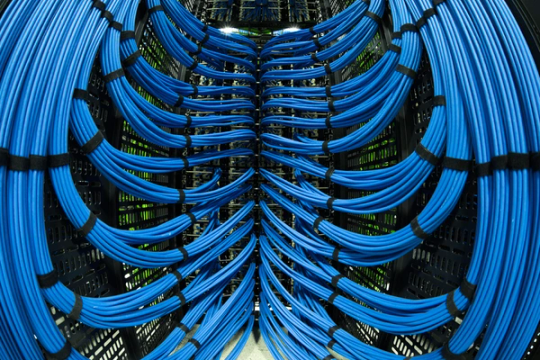
Ribs
#digitalismmm#digitalism#digital#tech#technology#techcore#machines#wires#religion#aesthetic#photography#art#computer#software#hardware#terminal#computing#photo
9K notes
·
View notes
Text


chipset and database learn about internet scams
#been having fun w these guys#i mentioned on bsky that i view these guys as hosts of an educational series where they teach about general computer literacy#chipset is very bad at internet and software stuff but is proficient w hardware. database is the opposite and has no idea what a CPU is#fern's sketchbook#original art#csdb
4K notes
·
View notes
Text




Hardware AKA MARK 13 (1990)
#hardware#90s#cyberpunk aesthetic#scifi movies#cyberpunk#wasteland#scifi#vaporwave#dystopianfuture#gifs#gifset#retrofuture#computers#90s movies#1990s#90s sci fi#robotics#machinery#cybernetics#cyberpunk city
979 notes
·
View notes
Text

USA 1993
739 notes
·
View notes
Text

6K notes
·
View notes
Text

Sharp PC-2001 Boombox Computer from 1979
#Sharp PC-2001#Sharp#retro computers#ラテカピュータ#retro aesthetic#70s#1979#vintage pc#hardware#retro tech#vintage tech#vintage#retro#1970s#CRT#retro computing#retro technology#vaporwave#retro electronics#micro computer museum
203 notes
·
View notes
Text




PolType/Cyfronex
Polish PolType is a family of microcomputer systems developed by Polish engineers in close cooperation with the Polish representative of the British MonoType company (PolType was acquired by the Cyfronex company in 1986, but the original developers remained with the company).
PolType devices were able to control LaserComp and MonoType Imagesetter machines (Imagesetter produces the printing film from which the printing plate is made – nowadays the plate is made directly, and the film is not needed).
The first generation of Poltype (1988) required its own eight-bit computer, the next, Poltype 03 and 04, used a PC XT class computer.
The 510-key POLSET 04 keyboard (for PolType 04) shown in the first two pictures was also Cyronex's own development. This was also excellent for typing complex mathematical formulas, but through it, the functions of the SW were also available (the mouse and WYSIWYG were still in a very experimental stage at that time)
source:
• Tumbler // sailing the cylindrical sea
• Mikro Klan 1988/1
• Bajtek 1988/5
#poltype#cyfronex#DTP#poland#retrocomputing#retro computing#keyboard#80s#ibm pc#wysiwyg#retro tech#old tech#technology#vintage tech#tech#computer#electronics#hardware#80s computer
233 notes
·
View notes
Text

#y'know. for mouse mode!#i unironically need this though#the purpose of pc games like solitaire back then was literally to help ease people into actions like drag & drop using a mouse#since computer mice were still new back then. it honestly feels like a very nintendo way of doing things#easing ppl into a new hardware feature using existing irl games they're already familiar with. like motion controls did with wii sports#nintendo#nintendo direct#nintendo switch#nintendo switch 2#switch 2#windows xp#windows#ms paint#solitaire#minesweeper
245 notes
·
View notes
Text

Computer Metropolis
#art#nostalgia#1980s#vaporwave#aesthetic#vintage#magazine#1990s#neon colors#neon#illustration#retrowave#retro computing#retro tech#retro#tech#technology#computer science#computers#computer#90s aesthetic#80s aesthetic#80s#90s#software#hardware#artwork
449 notes
·
View notes
Text
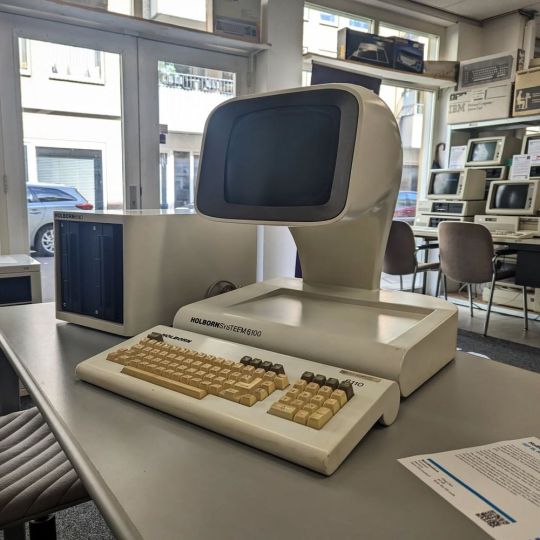
224 notes
·
View notes
Text
Quantum simulator could help uncover materials for high-performance electronics
New Post has been published on https://thedigitalinsider.com/quantum-simulator-could-help-uncover-materials-for-high-performance-electronics/
Quantum simulator could help uncover materials for high-performance electronics


Quantum computers hold the promise to emulate complex materials, helping researchers better understand the physical properties that arise from interacting atoms and electrons. This may one day lead to the discovery or design of better semiconductors, insulators, or superconductors that could be used to make ever faster, more powerful, and more energy-efficient electronics.
But some phenomena that occur in materials can be challenging to mimic using quantum computers, leaving gaps in the problems that scientists have explored with quantum hardware.
To fill one of these gaps, MIT researchers developed a technique to generate synthetic electromagnetic fields on superconducting quantum processors. The team demonstrated the technique on a processor comprising 16 qubits.
By dynamically controlling how the 16 qubits in their processor are coupled to one another, the researchers were able to emulate how electrons move between atoms in the presence of an electromagnetic field. Moreover, the synthetic electromagnetic field is broadly adjustable, enabling scientists to explore a range of material properties.
Emulating electromagnetic fields is crucial to fully explore the properties of materials. In the future, this technique could shed light on key features of electronic systems, such as conductivity, polarization, and magnetization.
“Quantum computers are powerful tools for studying the physics of materials and other quantum mechanical systems. Our work enables us to simulate much more of the rich physics that has captivated materials scientists,” says Ilan Rosen, an MIT postdoc and lead author of a paper on the quantum simulator.
The senior author is William D. Oliver, the Henry Ellis Warren professor of electrical engineering and computer science and of physics, director of the Center for Quantum Engineering, leader of the Engineering Quantum Systems group, and associate director of the Research Laboratory of Electronics. Oliver and Rosen are joined by others in the departments of Electrical Engineering and Computer Science and of Physics and at MIT Lincoln Laboratory. The research appears today in Nature Physics.
A quantum emulator
Companies like IBM and Google are striving to build large-scale digital quantum computers that hold the promise of outperforming their classical counterparts by running certain algorithms far more rapidly.
But that’s not all quantum computers can do. The dynamics of qubits and their couplings can also be carefully constructed to mimic the behavior of electrons as they move among atoms in solids.
“That leads to an obvious application, which is to use these superconducting quantum computers as emulators of materials,” says Jeffrey Grover, a research scientist at MIT and co-author on the paper.
Rather than trying to build large-scale digital quantum computers to solve extremely complex problems, researchers can use the qubits in smaller-scale quantum computers as analog devices to replicate a material system in a controlled environment.
“General-purpose digital quantum simulators hold tremendous promise, but they are still a long way off. Analog emulation is another approach that may yield useful results in the near-term, particularly for studying materials. It is a straightforward and powerful application of quantum hardware,” explains Rosen. “Using an analog quantum emulator, I can intentionally set a starting point and then watch what unfolds as a function of time.”
Despite their close similarity to materials, there are a few important ingredients in materials that can’t be easily reflected on quantum computing hardware. One such ingredient is a magnetic field.
In materials, electrons “live” in atomic orbitals. When two atoms are close to one another, their orbitals overlap and electrons can “hop” from one atom to another. In the presence of a magnetic field, that hopping behavior becomes more complex.
On a superconducting quantum computer, microwave photons hopping between qubits are used to mimic electrons hopping between atoms. But, because photons are not charged particles like electrons, the photons’ hopping behavior would remain the same in a physical magnetic field.
Since they can’t just turn on a magnetic field in their simulator, the MIT team employed a few tricks to synthesize the effects of one instead.
Tuning up the processor
The researchers adjusted how adjacent qubits in the processor were coupled to each other to create the same complex hopping behavior that electromagnetic fields cause in electrons.
To do that, they slightly changed the energy of each qubit by applying different microwave signals. Usually, researchers will set qubits to the same energy so that photons can hop from one to another. But for this technique, they dynamically varied the energy of each qubit to change how they communicate with each other.
By precisely modulating these energy levels, the researchers enabled photons to hop between qubits in the same complex manner that electrons hop between atoms in a magnetic field.
Plus, because they can finely tune the microwave signals, they can emulate a range of electromagnetic fields with different strengths and distributions.
The researchers undertook several rounds of experiments to determine what energy to set for each qubit, how strongly to modulate them, and the microwave frequency to use.
“The most challenging part was finding modulation settings for each qubit so that all 16 qubits work at once,” Rosen says.
Once they arrived at the right settings, they confirmed that the dynamics of the photons uphold several equations that form the foundation of electromagnetism. They also demonstrated the “Hall effect,” a conduction phenomenon that exists in the presence of an electromagnetic field.
These results show that their synthetic electromagnetic field behaves like the real thing.
Moving forward, they could use this technique to precisely study complex phenomena in condensed matter physics, such as phase transitions that occur when a material changes from a conductor to an insulator.
“A nice feature of our emulator is that we need only change the modulation amplitude or frequency to mimic a different material system. In this way, we can scan over many materials properties or model parameters without having to physically fabricate a new device each time.” says Oliver.
While this work was an initial demonstration of a synthetic electromagnetic field, it opens the door to many potential discoveries, Rosen says.
“The beauty of quantum computers is that we can look at exactly what is happening at every moment in time on every qubit, so we have all this information at our disposal. We are in a very exciting place for the future,” he adds.
This work is supported, in part, by the U.S. Department of Energy, the U.S. Defense Advanced Research Projects Agency (DARPA), the U.S. Army Research Office, the Oak Ridge Institute for Science and Education, the Office of the Director of National Intelligence, NASA, and the National Science Foundation.
#Algorithms#amplitude#analog#approach#atom#atomic#atoms#author#Beauty#Behavior#change#classical#computer#Computer Science#Computer science and technology#computers#computing#computing hardware#condensed matter#defense#Defense Advanced Research Projects Agency (DARPA)#Department of Energy (DoE)#Design#devices#Discoveries#dynamics#education#effects#Electrical engineering and computer science (EECS)#electromagnetic
1 note
·
View note
Text
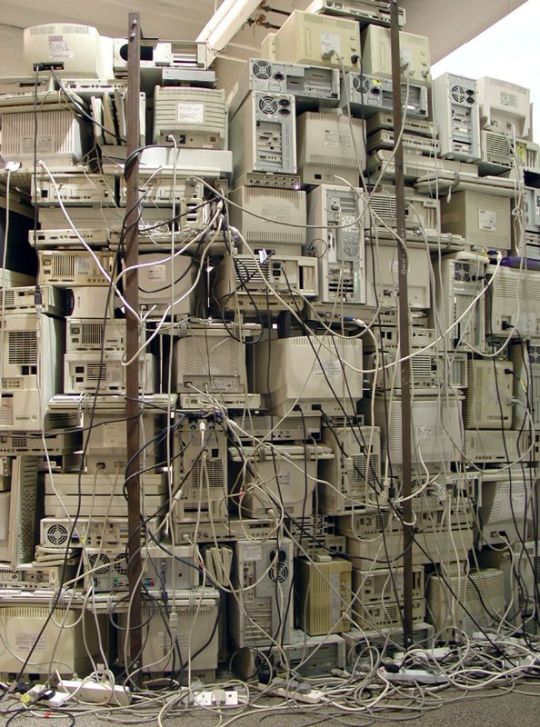
How to hide wires in your workplace
#digitalismmm#digitalism#digital#computers#computing#wires#wire#machine#hardware#software#tech#technology#techcore#retro#aesthetic#photography#machines
3K notes
·
View notes
Text
Have you got an old Mac that is no longer supported by Apple? It's time to give it a new life.
How to install the latest MacOS on Mac hardware that is no longer officially supported using OpenCore Legacy Patcher.
I recently discovered this and it has been a game changer. Recently my partner needed a Mac for her music course, so we bought a 2012 Macbook Pro as it was cheap and on paper still had decent hardware for working with music. We were then disappointed to find out that it is no longer supported by Apple, and therefore can't run the latest version of Logic, which she needed to inter-op with the school comptuers. Just as we thought we had bought a less than useful computer, I found this video about OpenCore Legacy Patcher from Youtuber Action Retro.
It's a community made piece of software that allows you to install the latest version of MacOS on any Intel Mac, from the late 2000s onwards. All you need to do is download the application on a mac, it will then allow you to make a bootable USB drive for any version of MacOS you want, and you just need to choose the specific mac you are targeting from a list, and it "blesses" the bootable drive, allowing you to install it on your unsupported mac using the normal install process.
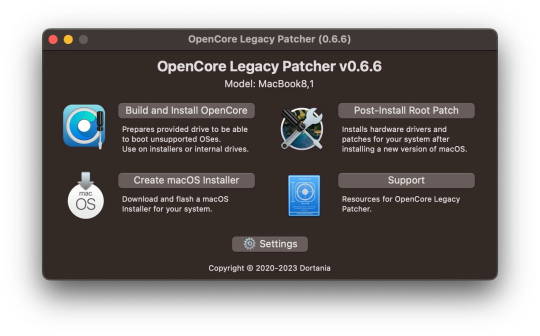
I tried it and it it worked perfectly on the 2012 Macbook Pro, and the latest version of MacOS Sonoma is running perfectly well on the 12 year old hardware. It also allowed us to install the latest version of Logic, so it's working great.
Props to the team for making this and allowing hardware that would otherwise be e-waste to continue to be usable with the modern internet and software. If you end up using it, please consider donating to the team as apparently they had to jump through some serious technical hoops to get this working. Here is the link again if you need it: https://dortania.github.io/OpenCore-Legacy-Patcher/
#mac#MacOS#Computers#OpenCore Legacy#OpenCore Legacy Patcher#Software#hardware#Apple#computer recycling#Action Retro
3K notes
·
View notes
Text

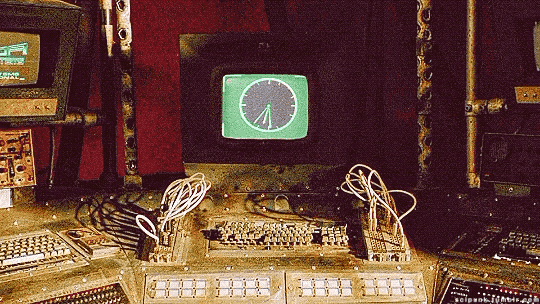


Hardware AKA MARK 13 (1990)
#hardware#90s#cyberpunk aesthetic#scifi movies#cyberpunk#wasteland#scifi#vaporwave#dystopianfuture#gifs#gifset#retrofuture#computers#90s movies#1990s#90s sci fi#robotics#machinery#cybernetics#cyberpunk city
2K notes
·
View notes
Text
Zorin OS's auto-brightness feature has this bug that I like to call "Brightness Runaway," where, if it's semi-dark in the room you're in, loading a webpage with a Light Mode UI will throw enough light onto you (and the things around you) that Zorin OS will think it suddenly got brighter in the room.
That causes the auto-brightness to raise itself, which causes more light to be thrown into the room. That causes the auto-brightness to think it got even brighter, which causes it to raise the brightness even more.
The brighter it gets, the more auto-brightness tries to raise the brightness, and the more auto-brightness tries to the raise the brightness, the brighter it gets, so eventually you end up sitting there like:

#rambles#tech#technology#computer#computers#linux#zorin#zorin os#gnome#ubuntu#gif#brightness#light mode#hardware
273 notes
·
View notes